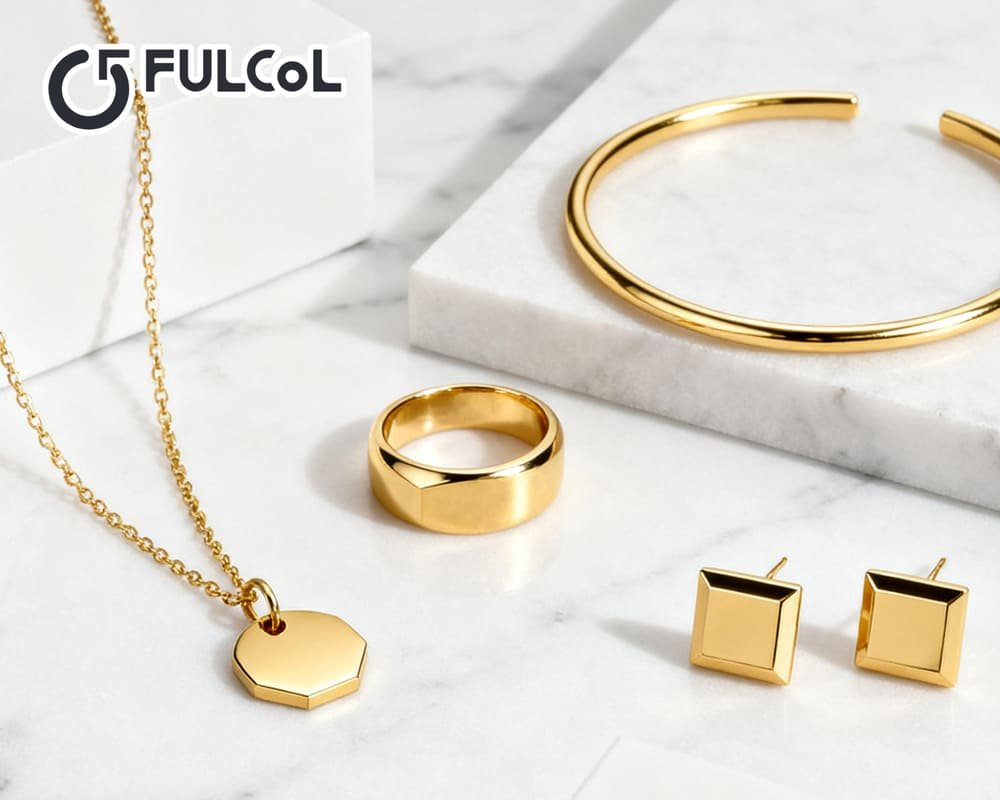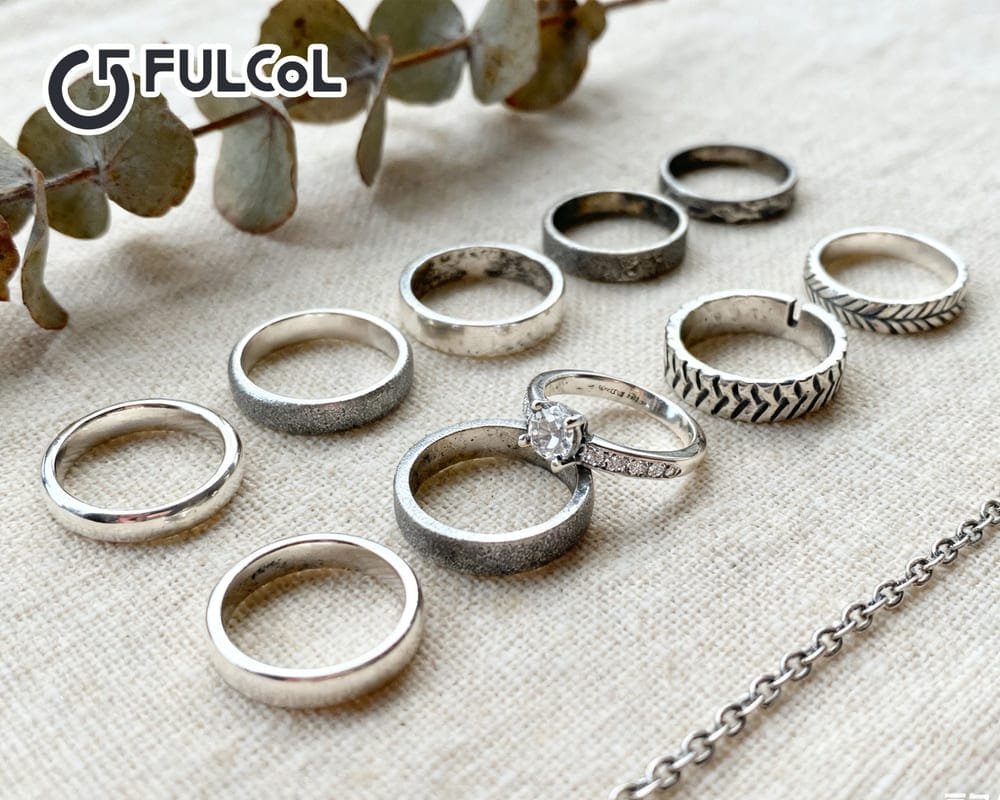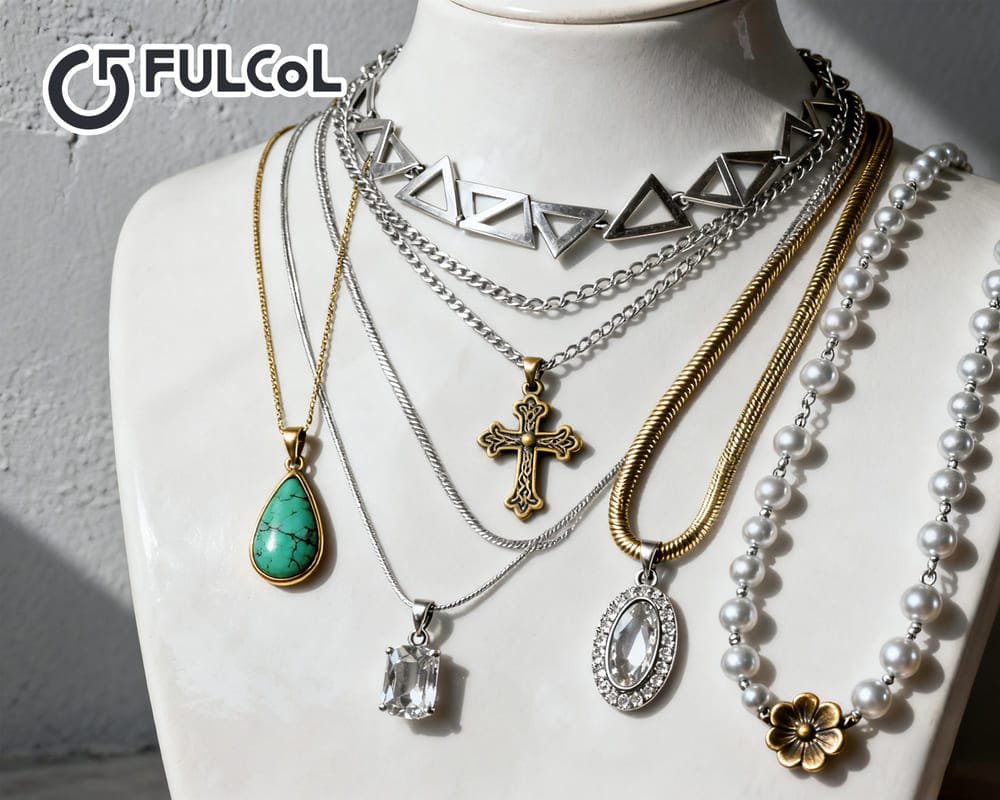Table of contents
Fundamentals of Gold Plating Process and Thickness Standards
Gold plating is a process of covering a base material with a thin layer of metal, designed to enhance the appearance, corrosion resistance, and value of jewelry. On 925 sterling silver jewelry, gold plating not only provides a luxurious golden appearance but also helps protect the silver from oxidation and wear.
Common Gold Plating Techniques
- Electroplating: Uses electrical current to deposit gold ions onto the silver surface. Key factors such as current, solution concentration, and temperature control ensure uniform plating and strong adhesion.
- Vacuum Deposition: Applies gold through evaporation or sputtering in a vacuum environment, producing a dense and uniform layer but at a higher cost.
- PVD Coating (Physical Vapor Deposition): Offers high hardness and wear resistance, suitable for high-end custom jewelry.
Gold Plating Thickness Units and Industry Standards
Gold plating thickness is usually measured in microns (μm) or mils. The jewelry industry generally follows the standards below:
- 0.5–1 μm (20–40 microinches): Suitable for light or temporary wear, low cost but prone to wear.
- 2–2.5 μm (100 microinches): Medium thickness suitable for everyday wear with good durability.
- 5 μm and above (200 microinches): High-durability plating for long-term wear or high-end custom jewelry.
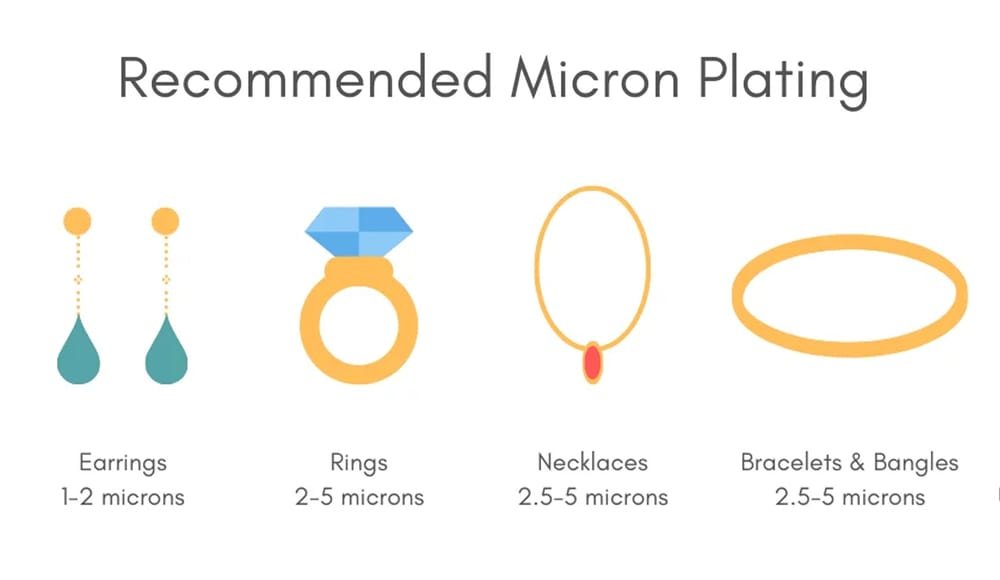
Applications and Selection of Different Gold Plating Thicknesses
The choice of gold plating thickness should consider the type of jewelry, frequency of wear, and customer needs. Thickness affects not only the color and appearance but also the lifespan of the piece.
Common Thickness Applications
- 0.5–1 μm: Suitable for short-term or lightweight jewelry, such as trendy earrings or pendants. Low cost but prone to fading, requiring gentle handling.
- 2–2.5 μm: Ideal for rings, bracelets, and necklaces worn daily. Offers better wear resistance and stable color; this is the most common thickness in the market.
- 3–5 μm and above: Mainly for high-end custom jewelry, such as wedding rings or luxury necklaces. Thicker plating improves oxidation and scratch resistance while enhancing overall elegance.
Impact of Thickness on Visual Effect and Cost
Thicker plating provides richer color and longer-lasting shine, but also increases cost. During customization, designers and clients need to balance aesthetics, durability, and budget. Professional manufacturers like Fulcol provide guidance on plating thickness according to jewelry type and client requirements, ensuring both beauty and practicality.
How to Choose the Right Gold Plating Thickness for Custom Jewelry
Selecting the appropriate gold plating thickness is essential for both aesthetics and durability in custom jewelry. Here are practical guidelines:
Determine Wear Frequency and Occasion
- Everyday Wear: 2–2.5 μm is recommended for balanced aesthetics and durability.
- Special Occasion Wear: 1 μm is sufficient, keeping the piece light and cost-effective.
- High-End Luxury Custom Pieces: 3–5 μm or more ensures long-term use and premium feel.
Understand Material and Jewelry Type
- Rings, bracelets, and other high-wear areas should have thicker plating.
- Earrings and pendants, which experience less friction, can have slightly thinner plating.
Communicate with the Manufacturer
- Clearly specify plating thickness, process, and maintenance requirements.
- Request thickness test reports (e.g., XRF analysis) to verify plating quality.
Follow Industry Standards
- Adhere to FTC or European jewelry association standards to ensure plating meets labeling requirements.
- Avoid products with plating that is too thin or misleading.
By following these steps, customers and designers can choose the most suitable gold plating thickness based on use and budget, ensuring sterling silver custom jewelry remains both beautiful and durable.
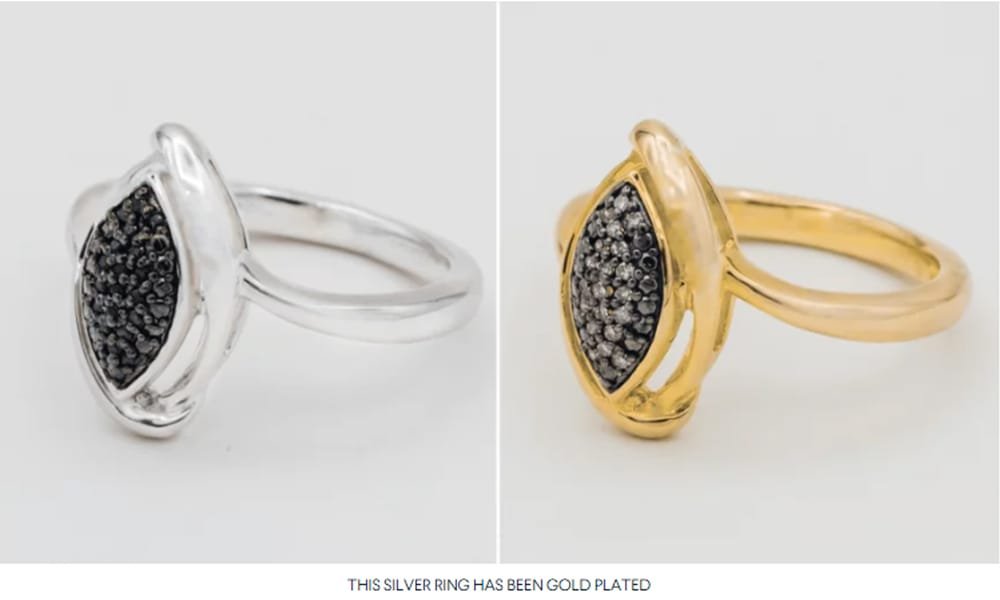
How Fulcol Ensures Gold Plating Quality
As a professional 925 Sterling Silver Manufacturers, Fulcol has strict procedures and advanced technology to control gold plating quality.
Process Control
- Pre-treatment Cleaning: Ultrasonic cleaning and acid treatment remove surface oil and oxidation, ensuring uniform adhesion.
- Electroplating Parameter Optimization: Current, voltage, and plating solution temperature are precisely controlled to deposit gold ions steadily and evenly.
- Surface Finishing: Post-plating polishing, sandblasting, or protective coating enhances wear resistance and shine.
Professional Testing
- XRF Analyzer: Non-destructive measurement of plating thickness ensures each batch meets client requirements.
- Microscope Inspection: Verifies uniformity, absence of bubbles or defects.
- Wear and Corrosion Tests: Simulate everyday wear to ensure long-term stability.
Case Experience
Fulcol has provided sterling silver custom jewelry for multiple international brands, achieving precise control over plating thickness from 0.5 μm to 5 μm. Every piece is crafted to be both beautiful and durable.
Fulcol: Professional 925 Sterling Silver Manufacturer
As a global leader among 925 Sterling Silver Manufacturers, Fulcol has extensive experience and exceptional craftsmanship in custom jewelry.
Company Strength
- History and Scale: Years of industry experience; factory spans several thousand square meters, equipped with advanced CAD design systems and production equipment.
- Production Capacity: Annual output reaches hundreds of thousands of pieces, supporting small-batch custom orders and large-scale production.
- Certifications: ISO certified, SGS testing reports, Oeko-Tex standard compliance ensures safe and eco-friendly materials.
Manufacturing Advantages
- Selected Raw Materials: Strict control of silver content ensures every 925 sterling silver piece meets international standards.
- Customization Capability: Supports personalized designs, from CAD modeling and prototyping to mass production.
- Process Assurance: Polishing, electroplating, plating thickness control, and quality inspection ensure uniform color and strong durability.
- Customer Trust: Serves multiple international jewelry brands, exporting to Europe, America, and Asia, building a strong reputation.
With advanced technology, strict quality control, and rich experience, Fulcol delivers high-quality, durable, and beautiful sterling silver custom jewelry, making it a standout among 925 Sterling Silver Manufacturers worldwide.
| Start Your Custom Order | Email: info@fulcol.com | Number: +86 13055603907 |
Gold plating thickness directly affects the appearance, durability, and value of jewelry, and choosing a reliable manufacturer is key to ensuring quality. This article explains the fundamentals of gold plating, thickness standards, application choices, and practical guidance, while highlighting Fulcol’s expertise as a professional 925 Sterling Silver Manufacturers. Whether for daily wear or high-end custom jewelry, selecting the right plating thickness and collaborating with a trusted manufacturer ensures pieces that are beautiful, durable, and valuable.


